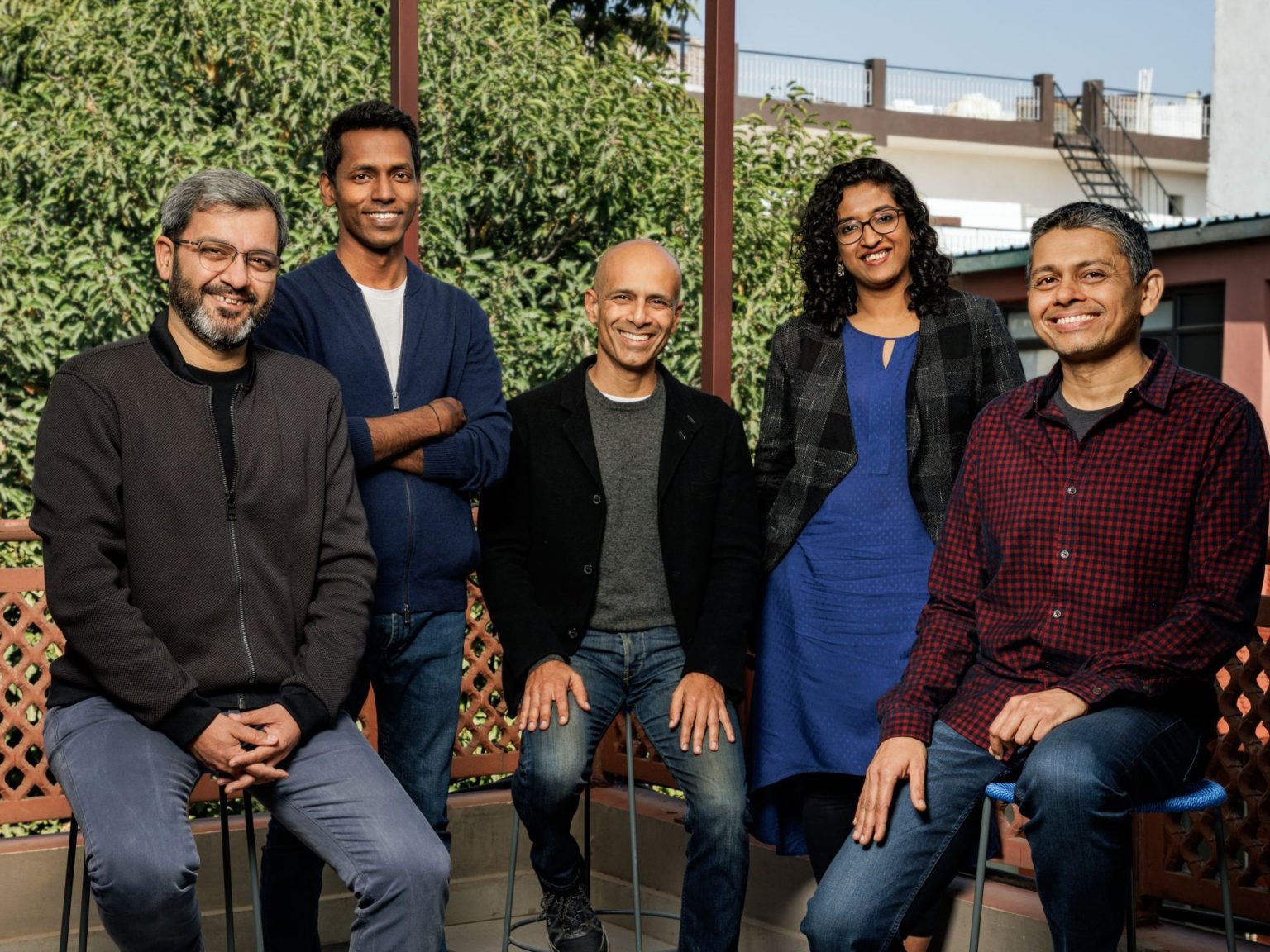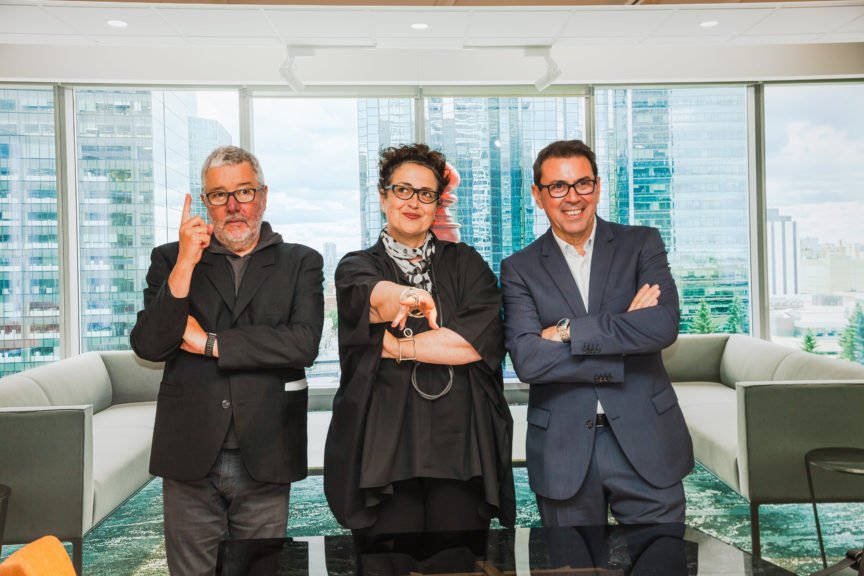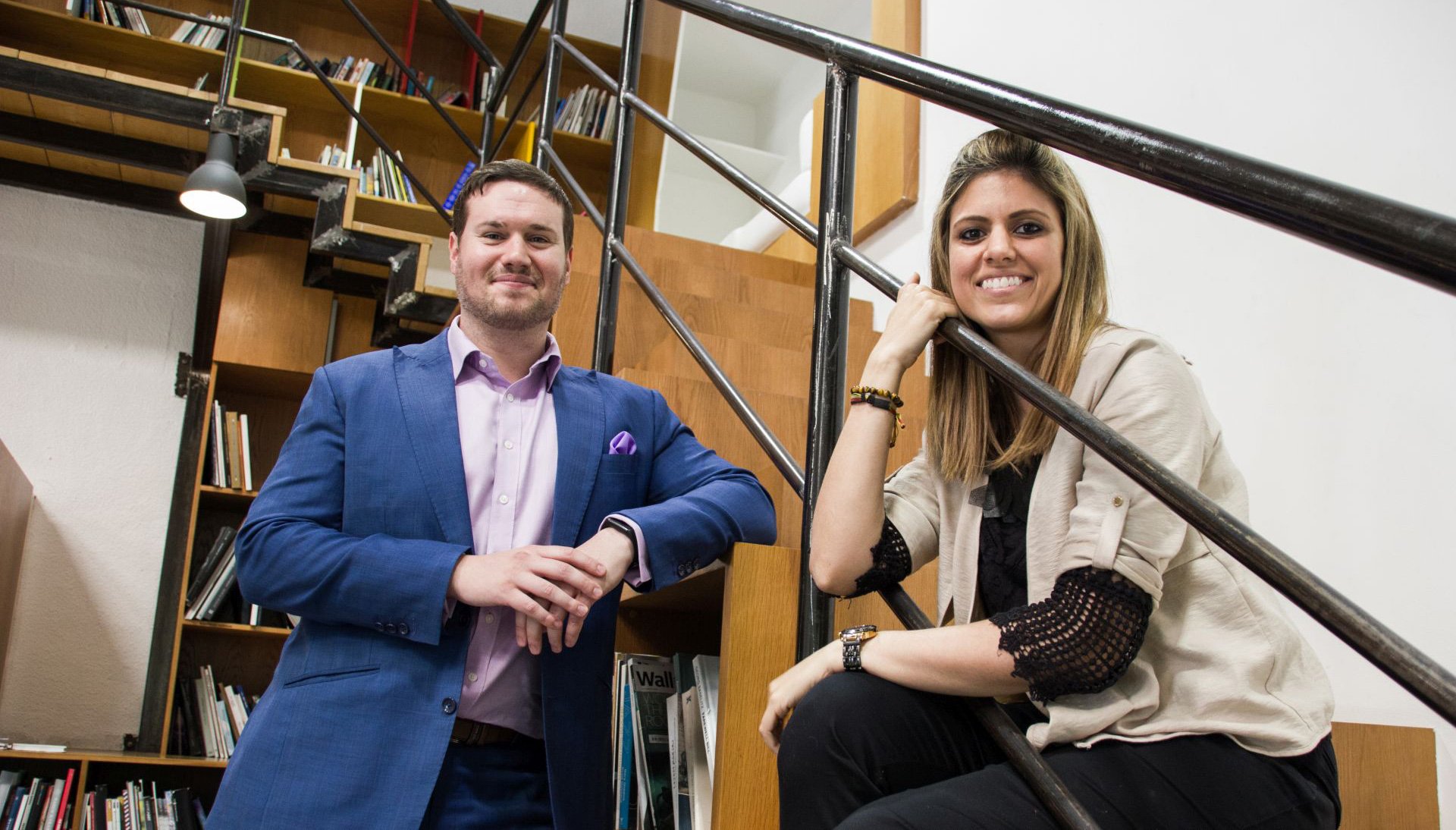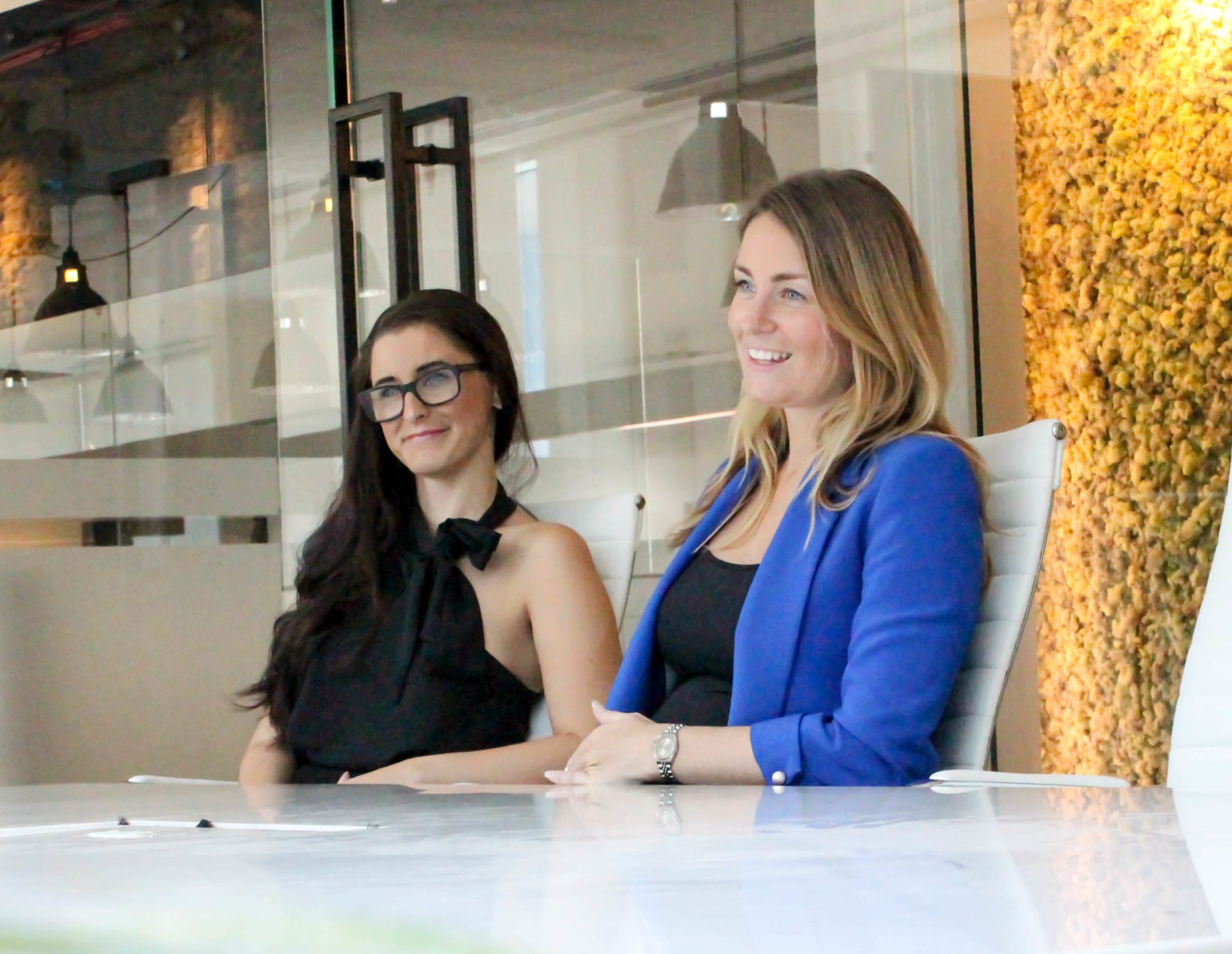Architecture design coupled with social responsibility and cultural consciousness is a rare find. Delhi-based Studio Lotus occupies a unique position in this creative realm. The firm’s hierarchy is led by a group of Principals – Ambrish Arora, Ankur Choksi, Asha Sairam, Harsh Vardhan, and Sidhartha Talwar. The studio’s organisational model is a hub-and-spoke structure, where team leaders operate mini-studios, enabling dialogue, creativity, and shared ownership. From their distinctive philosophy to their unique collaborative model, Studio Lotus unveils a holistic perspective that sheds light on the very soul of their operations. Their story and journey are one of resilience. Let’s take a closer look…
Emergence and Evolution
In the early 2000s, when bold design ventures were often seen as daring leaps, Studio Lotus took its first steps. Ambrish, founder and creative force, was then a partner at a prominent firm, Design Habit. There he worked under one of India’s leading Exhibit and Museum designers, Amardeep Behl. Sidhartha and Ankur, too, worked in the same firm and they quickly developed camaraderie.
A friend of Ambrish working for a young IT firm helped him and Sidhartha land their first interior project. “[We] went on to design what we thought was fairly avant-garde work for its time, and the project won a few design awards. I also realised how fulfilling it was to work on pure space, material and form, free of the overlay of communication”, Ambrish recalls.
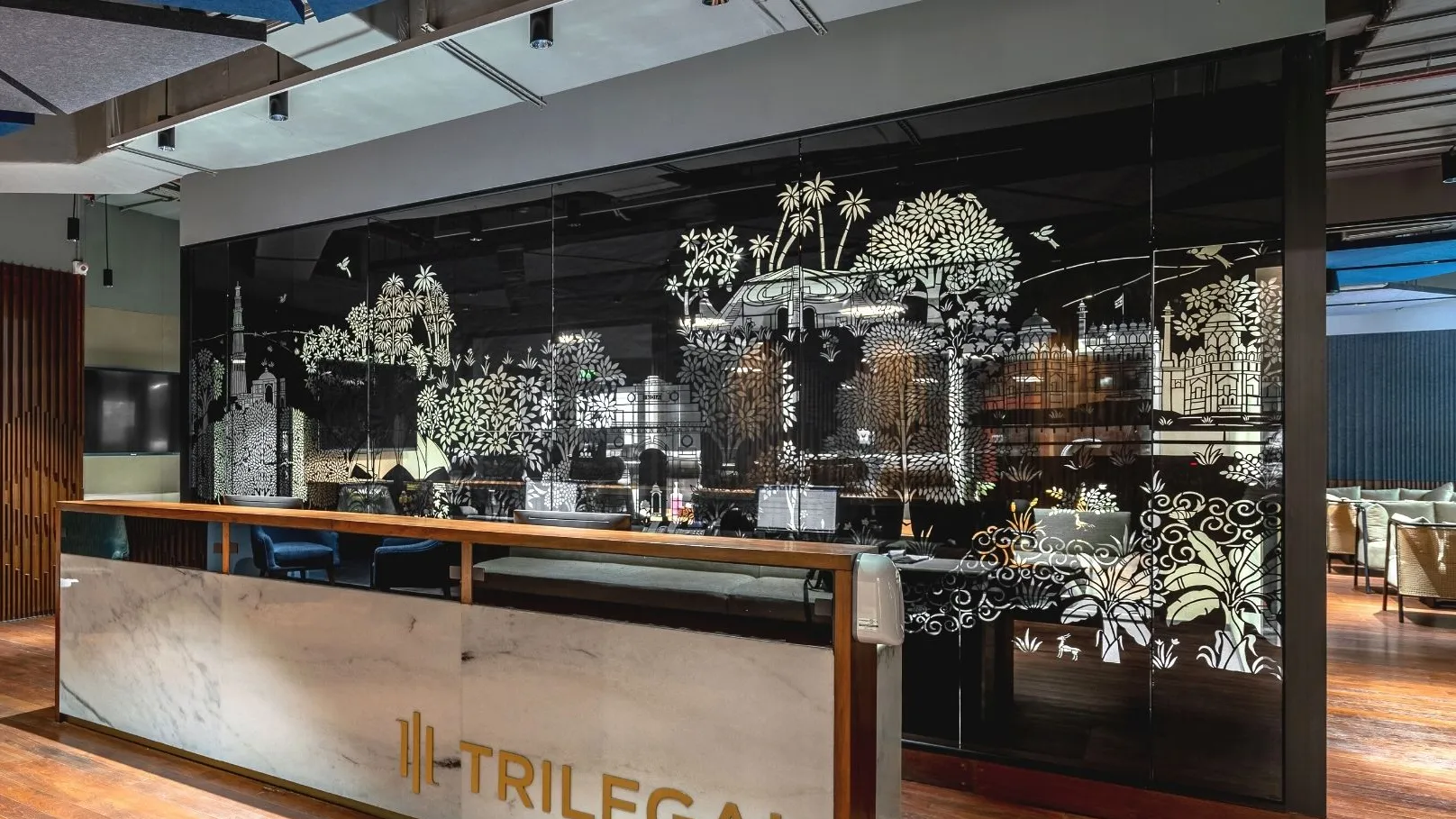
Trilegal Office, Gurugram, India; Photography Credits: Avesh Gaur
By mid-2002, Ambrish founded Studio Lotus and shortly Sidhartha and Ankur followed as co-founders. But by the end of the year and a handful of interior projects later, the trio found themselves out of work and on the brink of closing shop. “I remember having weeks of sleepless nights and literally making door-to-door visits to get some work”, Ambrish communicates his plight.
Right then luck struck. “INTACH (India’s leading heritage conservation trust) was looking for a young design team to design a Crafts Fair in Patiala because the design team they had commissioned had opted out at the last minute,” Ambrish narrates. Relief is prominent in his tone even after 20 years. “We had 45 days to design and build which we excitedly took on! It saved us by the skin of our teeth.”
Simultaneously, they accrued three interior design projects — F-Bar, Khaja Chowk and Viya Home — that caught eyes, won a few awards and went down in history as the studio’s most dramatic turning point.
“I remember having weeks of sleepless nights and literally making door-to-door visits to get some work.”
– Ambrish Arora, Founding Architect, Studio Lotus
Leadership that Drives Innovation
At Studio Lotus, leadership isn’t about hierarchy, but about cultivating the “Collective Genius.” Principals Ambrish Arora, Ankur Choksi, Asha Sairam, Harsh Vardhan, and Sidhartha Talwar form a creative powerhouse. Together, they navigate the design journey as facilitators, guiding a team of diverse talents. This hub-and-spoke model fosters creativity and encourages collaboration. The studio boasts a team of over 100 professionals, hailing from diverse backgrounds such as architecture, interior design, engineering, graphic design, and textiles.
Sidhartha explains this synergy saying, “Our design process includes everyone, from the principals to the interns, fostering a culture centred on a high degree of individual ownership. This dialogue with design extends not just to team members but includes clients, consultants, contractors, artisans, construction workers, and so on, enabling them to contribute to what will directly impact the project, their lives and society.”
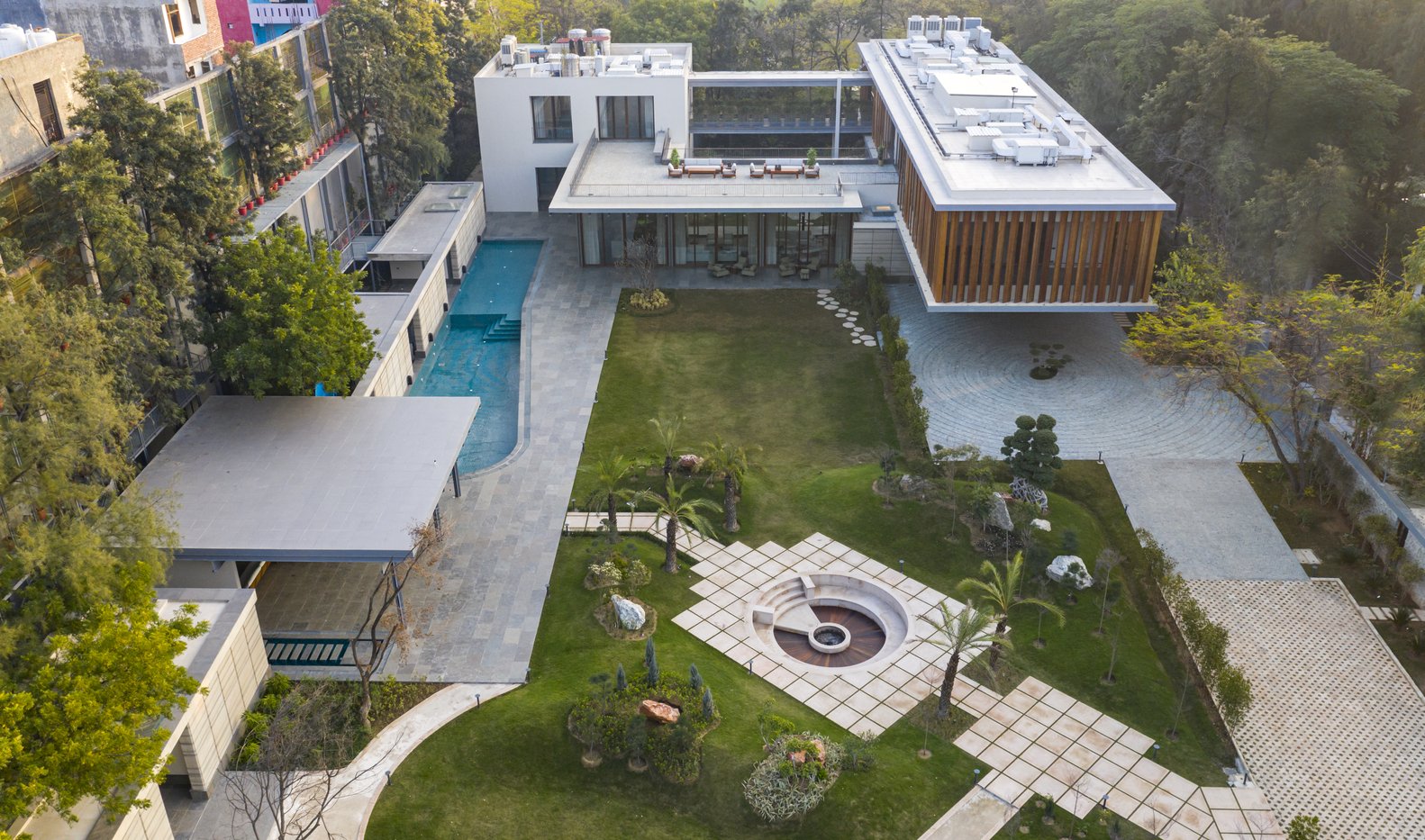
The Earth and Glass House, India; Photography Credits: Niveditaa Gupta
Another principal Asha indulges, “Each of us principals have distinct strengths and perspectives. While there are invariably differing views, our ability to listen, discuss and come to a common ground allows us to truly capitalise on this idea of collective genius. I believe our work is richer for it. While the projects may not be aesthetically or architecturally similar, there is an ethos that comes through. We believe this makes the work of the studio less predictable.”
“Each of us principals have distinct strengths and perspectives. While there are invariably differing views, our ability to listen, discuss and come to a common ground allows us to truly capitalise on this idea of collective genius. I believe our work is richer for it. While the projects may not be aesthetically or architecturally similar, there is an ethos that comes through. We believe this makes the work of the studio less predictable.”
– Asha Sairam, Principal, Studio Lotus
Inside the Office – The Signature Studio Lotus Playground
Beyond their projects, Studio Lotus’ workspace embodies their ethos. Their workspace is a charming adaptation of an old house located in the heart of New Delhi’s urban village, Lado Sarai. Over time, they’ve expanded and repurposed different parts of the house to create their studio, complete with a delightful veranda overlooking a courtyard.
Elaborating on the company’s culture, Asha says, “A big part of our practice is creating activities that help build our culture and us as a unit. One of our sacred rituals is eating communally. We set up a kitchen in our studio right from our first year of operation. Even today Umesh-ji, our star chef, cooks delicious homemade food for us all to eat together on our rooftop cafeteria. People who eat together, work well together!”
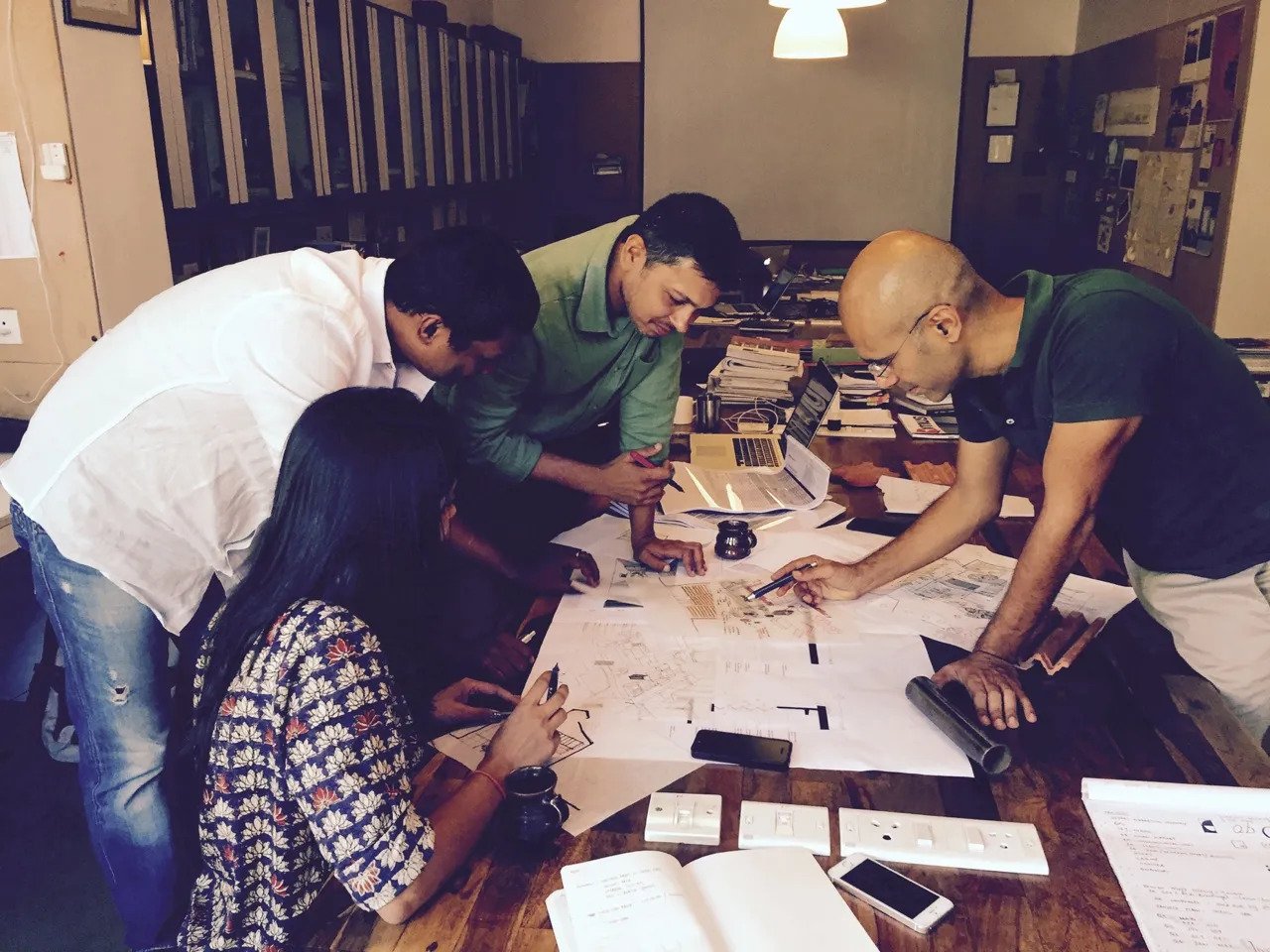
At Studio Lotus, mentorship is serious business; it’s not a concept. All five principles, as obsessed as they are with design and details, also spend a significant amount of time and resources – week on week, month on month – to foster growth and imagination among their subordinates. The team believes in passing the baton, presenting young designers opportunities and being tolerant as they explore the wide multiverse of design.
No questions are bad questions for Ambrish, Sidhartha, Ankur, Asha or Harsh. Except for maybe the one time an interviewee walked in and asked them, “What is the kind of work you do?
“Our design process includes everyone, from the principals to the interns, fostering a culture centred on a high degree of individual ownership. This dialogue with design extends not just to team members but includes clients, consultants, contractors, artisans, construction workers, and so on, enabling them to contribute to what will directly impact the project, their lives and society.”
– Sidhartha Talwar, Co-Founder and Principal, Studio Lotus
At Studio Lotus, Luxury and Sustainability aren’t Mutually exclusive
Sidhartha is poignant, he reveals, “A large swathe of our work, whether we like it or not, caters to the segment of luxury which makes us think, ‘How can we redefine luxury for it to be exciting and responsible?’”
Frugal innovation is a theme much explored at the firm, it’s basically doing more with less. Ideas like building reuse and adaptation excite the team. “It is not just about historic value, it’s about just the sheer amount of built space that is unused, how do we look at opportunities for reuse before we decide to build anew”, Sidhartha states.
Above: Raas Chhatrasagar | Photography Credits: Avesh Gaur and Andre J. Fanthome; Below: Raas Jodhpur | Photography Credits: Andre J. Fanthome
To the principals beauty possesses a deep-seated connection with sustainability. “Structures that are beautiful are well-made and endure the test of time”, Sidhartha says. Their three projects with RAAS Hotels, breathe life into these ideals.
It is fascinating how three different projects seeped in three diverse environments take individualistic architectural directions but share the same ethos. It’s even ironic, for these projects seem to embody the creators – Studio Lotus’ – hub-and-spoke structure with walls and windows.
“If you were to build aspirations such as what constitutes development in the Western hemisphere, we would strip India’s resources bare in no time.”
– Ankur Choksi, Co-Founder and Principal, Studio Lotus
Don’t Ape the West, Instead Ace the Context
On contextual co-relation to design and architecture. Studio Lotus’ Ankur has a sound take. “If you were to build aspirations such as what constitutes development in the Western hemisphere, we would strip India’s resources bare in no time,” he warns.
In antithesis, Studio Lotus has been looking inwards for over a decade now. They dedicatedly examine systems that already exist – very complex, advanced systems of building, that cater to the climatic conditions of India. In Ankur’s eyes, the animation and thoughtfulness of vernacular Indian architecture is a boon. “We have an opportunity to generate employment through the construction process”, he exclaims. “Afterall, India boasts the largest repository of skilled and semi-skilled human labour. An invaluable resource is right under our nose.”
The Krushi Bhawan, for example, stands out as a government facility that breaks free from the traditional office building mould. It demonstrates how such a facility can embrace local culture, craftsmanship, sustainability, and integrate itself into the community’s social fabric.
Krushi Bhawan, Bhubaneshwar; Photography Credits: Andre J. Fanthome
“Our work is grounded on the principles of Conscious Design, an approach that celebrates local resources, cultural influences, a keen attention to detail and an inclusive process. We aim to craft benchmark solutions that address society’s changing ways of living and working. Our design process looks at sustainability through the multiple lenses of cultural, social and environmental impact. ”
– Harsh Vardhan, Principal, Studio Lotus
To achieve this, Studio Lotus elevated the government offices above the ground, creating an inviting public plaza-like space. Here, you’ll find amenities like a cafe, library, meeting rooms, gallery, and auditorium, all for the people of Bhubaneswar to enjoy. Notably, passive design elements, like a brick-louvred solar shading system and a night-purging ventilation system, reduced the project’s Energy Performance Index to an impressive 35kWh/m2/year.
To bookend it, Harsh further explains, “Our work is grounded on the principles of Conscious Design, an approach that celebrates local resources, cultural influences, a keen attention to detail and an inclusive process. We aim to craft benchmark solutions that address society’s changing ways of living and working.Our design process looks at sustainability through the multiple lenses of cultural, social and environmental impact. ”
At Studio Lotus, the team explores ways to engage the user and create elements that encourage them to move through the space. A strong focus on tactile and sensory qualities of space help them weave narratives that leave a lasting influence.
Article info
Article:
Date added:
5 September, 2023

